Canvas wall tents have been a temporary shelter standby since the Middle Ages.
Today, a wall tent may still be the best choice for a survival/preparedness long-term shelter. This Elk Mountain Tents™ wall tent is one to consider. (See video review below)
by Leon Pantenburg
Disclaimer: Elk Mountain Tents™ supplied the product for field testing. I was not paid to review it or write this post. At the time of publication, there was no sponsorship relationship between Elk Mountain and Survival Common Sense. This post is my opinion, and Elk Mountain had no input. All I ever promised was a fair shake.
The sound of driving rain woke me up. I was snug in my sleeping bag, inside the 13’x13′ Elk Mountain tent. The other two hunters slept peacefully while the rain drops hammered the top and one side. I shined my light along the seams, along the windows and stovepipe entry, then checked the floor edges. Despite the wind and steady downpour, there were no leaks or seepage anywhere. I dozed off.
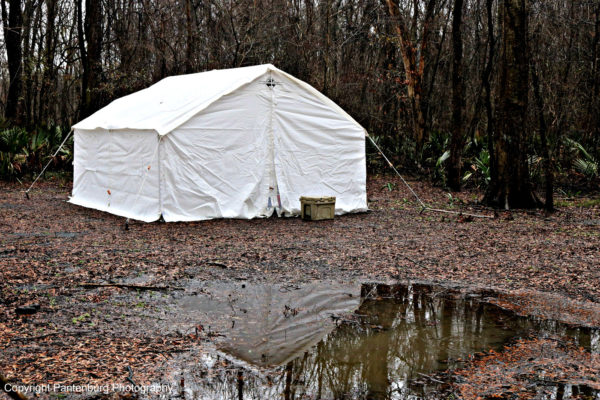
This Elk Mountain 13’x13′ tent stayed warm and dry, despite torrential rains and wind that lasted all night.
Wall tents are ubiquitous to western big game hunting and they do the job really well. Most often, canvas wall tents are associated with mountains, cold weather, blizzards, deep snow and elk hunts.
But us southeastern hunters can have equally challenging situations. We hunt and fish in sometimes warm, wet, extremely humid environments. Or, it can get cold and with ice on the water and sleet. Sometimes a southern deer or duck hunt can be just plain miserable.
So I was eager to try out this tent in the environment where I am most often.
A cold, wet environment is also more challenging to a tent than snow, IMO. Driving rain and wind will find any crack or hole in the canvas and water can roll off the sides and seep through the floor.
Freezing temperatures and snow, on the other hand, can be easier to handle. You may have to do some shoveling on the roof and around the walls, but any moisture will freeze before it can come inside.
Recently, I was hunting deer at the Delta National Forest in Central Mississippi, but my fellow hunters are waterfowl enthusiasts. They needed cold, rainy, windy weather for best results and that is what we got. At the end of the weekend, I hadn’t killed a buck, but I couldn’t have asked for better southeastern field testing conditions. We were checking out the Elk Mountain 13’x13′ wall tent. (Here are some wall tent shopping tips.)
Here is what I found.
The Good Stuff
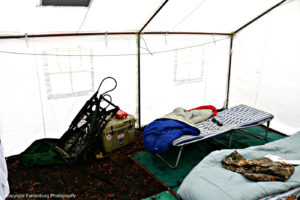
There was plenty of room for three hunters and their gear.
Tent material: According to the Elk Mountain website, the polyester tent material is an 11-oz canvas with a breaking strength of 449 lbs (warp direction) and 382 lbs (fill direction), making it significantly tougher than traditional canvas which has a breaking strength of 382 (warp) and 241 (fill) for 12 oz canvas and about 210 (warp) and 140 (fill) for 10 oz canvas. The tear strength is 67 lbs (warp) and 40 lbs (fill); this is roughly double that of the Sunforger canvas material used by other tent companies, Elk Mountain claims.
Roomy: The 13’x13′ was spacious for three hunters, muddy gear, and assorted equipment. Our cots had plenty of room between them, and we could have easily gotten two more hunters and gear inside. If personal space is not important and everyone is friendly, about 10 cots could be placed side-by-side. The high ceiling means you can stand upright. This is wonderful for getting dressed. There was plenty of room to take off waders and wet clothes.
These features proved invaluable.
Eves: The roof extends beyond the walls, creating eves to help prevent water from running down the walls. This is huge during a thunderstorm. If water is constantly running down the walls, it will eventually soak them, making heat transfer much more efficient. In other words, the tent will be cold and clammy. This is one reason some wall tents must have a tarp draped over the top.
Stove Jack: A stove inside the tent can quickly dry and warm it. All Elk Mountain canvas tents come with a stove jack and cover in the roof in the front right corner. The stove jack comes with a four, five and six inch circle sewn into it. Once you know the size of stove pipe, it can be cut to fit.
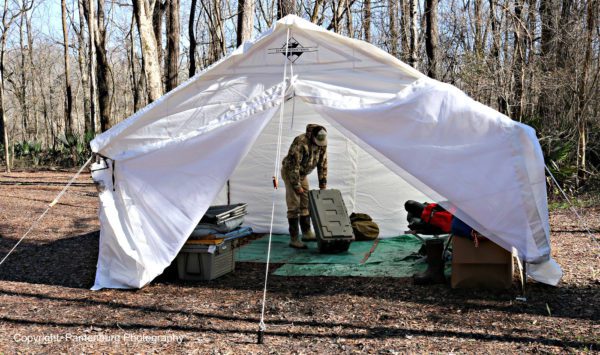
Setting up camp and packing up the Elk Mountain Tent to go home are easy, once you get the hang of the tent setup.
We didn’t have a stove, but we could have used our propane cooker inside to cook. Always make sure any enclosure is properly ventilated before using an open flame in it! Carbon monoxide kills!
Sod Cloth: All the Elk Mountain walls come with an extra six inches of material on the bottom to create a “sod cloth.” This overlaps onto the ground and diverts water away from the walls. It helps seal up the bottom of the tent.
We probably should have trenched the bottom, around the edges of the walls to guarantee drainage. But this was a field test, so we didn’t.
Reinforced Corners: Anywhere the tent comes in contact with the poles there are at least two layers of canvas. The four main corners Velcro and tie shut. The Velcro corners help eliminate the issue of the corners ripping while taking the tent on and off the frame.
Ventilation: The 13’x13′ comes with four windows, two on each side. Each window is screened and reinforced. Windows Velcro down on the sides and bottom to seal the window up when not in use. Windows can be rolled up and tied open.
The windows oppose each other, so cross-ventilation will happen. The eves have vents, and the entire front of the tent can be opened. This means that the tent can be comfortably ventilated, no matter what direction the wind is coming from.
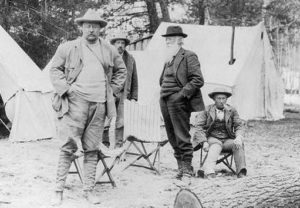
Wall tents were used on Teddy Roosevelt’s Mississippi bear hunt that resulted in the wildly popular Teddy Bear.
We never had a chance to use the windows, but during a long term camp, keeping the interior dry is a necessity. None of the windows leaked.
Condensation issues: Science has improved the types and quality of tent materials. Despite rain and high humidity, there were no condensation issues. All our gear stayed dry inside, and my wet socks and pants air-dried overnight.
Mosquito netting: Down south, no tent is going to get a second look if it doesn’t have effective mosquito netting. The Elk Mountain has sturdy netting over every opening. The high ceiling will help keep the tent cool in hot weather.
Made in the USA: Elk Mountain Tents are made in Nampa, Idaho. Employees make a fair wage, pay local, state and federal taxes and contribute to their community. Buy American!
Things to consider:
Heavy: If you have done the research and are looking to buy a wall tent, you know not to get one for backpacking! The tent is heavy – about 50 pounds. The bundle of steel poles probably weighs another 50-60 pounds. As wall tents go, though, this is a light tent. The poles are also long – the longest are 7-1/2 feet, and that makes them hard to haul unless you have a pickup or long bed vehicle. I suppose an expert could set this tent up single-handed, but I certainly couldn’t. Tent setup, in this case, is at least a two-person job.
Mark the poles: The instructions suggest marking the different length poles. I would say this is a necessity, and should be done as the first task. It is all too easy to get the poles mixed up. Don’t ask how I know. The parts will fit together OK, until you are just about done, then nothing works. Save some grief and cursing by making sure the poles don’t get mixed up.
Directions: A simple diagram accompanies the tent. I would appreciate a step-by-step sequence. These should be accompanied by photos. A YouTube video does no good if your phone can’t get service.
I’m guessing the tent could be set up in about 20 minutes, once you get the hang of it. As it was, it took me and another experienced hunter more than two hours from unpacking, to reading the directions to final set-up. (See “Mark the poles”^^^)
Floor: This tent doesn’t have a floor, and I took along a couple tarps to put down. They weren’t big enough to cover the whole floor, but we could easily get three cots on them and have plenty of room for gear. Next time, I will take a 16’x20′ tarp and fold the excess tarp up against the sides. This, in effect, will create a bathtub floor and further seal the interior. I will also take a 6’x8′ or 8’x10′ tarp to put in front. Put a cooler on one side of the door, and you have a place to sit and deal with muddy boots.
If you wanted to get really fancy, you could put a carpet on the tarp floor. This approaches glamping, though, so be careful!
Do you need an Elk Mountain Tent?
This tent is not for everyone or every outdoor situation. For a long-term camp or emergency shelter, the Elk Mountain would be superb. It is worth looking at if you anticipate a camp where weight is not really a consideration. I really like the product and anticipate a long relationship with this tent!
Please click here to check out and subscribe to the SurvivalCommonSense.com YouTube channel – thanks!

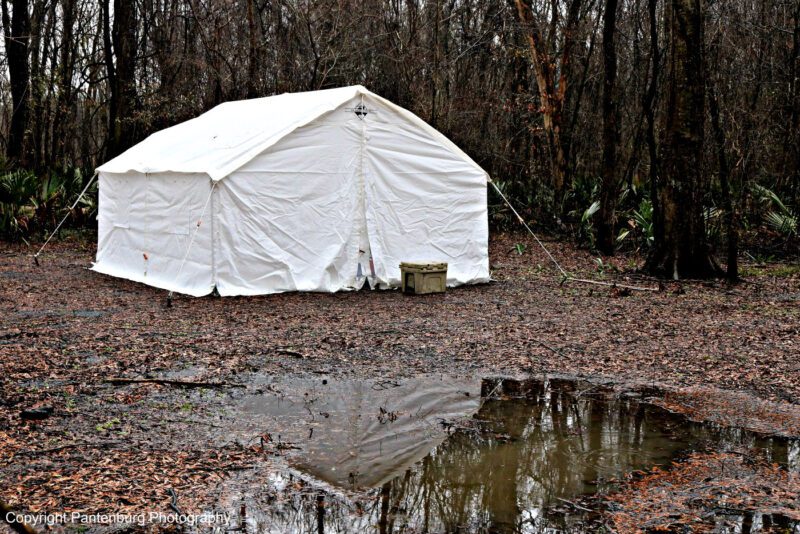
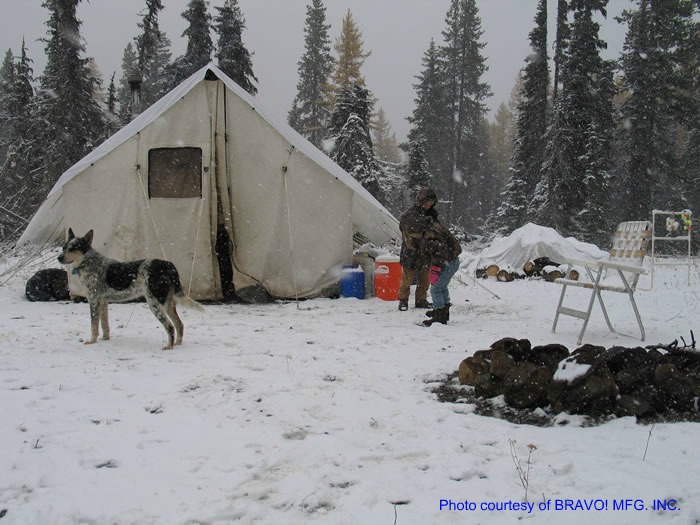
Leave a Reply